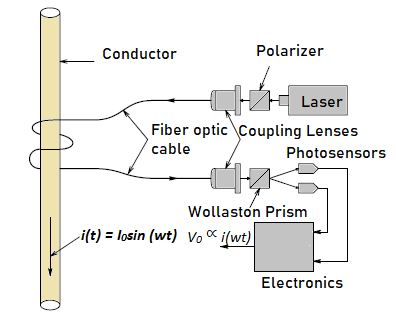Tag: instrumentation
-
Absolute vs. Secondary Instruments
Measuring instruments may be classified as either absolute instruments or secondary instruments. Absolute Instruments This type of instruments gives the value of the measurand in terms of instrument constant and its deflection; this instrument type doesn’t require comparison with any other standard. For instance, the tangent galvanometer gives the value of the current to be…
-
How to Measure Pressure using a U-tube Manometer
There are three categories of pressure measurement, namely absolute pressure, gauge pressure and differential pressure. The absolute pressure is the differences between the pressure at a particular point in a fluid and the absolute zero of pressure, that is, a complete vacuum. When the pressure measuring device measures the difference between the unknown pressure and…
-
How to Size a Control Valve
Control valve sizing refers to the procedure determining the correct size of a valve body. A valve sizing equation for incompressible fluids is given by: Which is the same as: Where Cv is the valve flow coefficient/valve capacity P1 = Upstream fluid pressure P2 = Downstream fluid pressure ρ = Mass density of fluid Q…
-
Process Control System Design for a Distillation Unit
The aim of a typical control system is to force a given set of process variables to act in some desired and prescribed way by either fulfilling some requirements of the time or frequency domain or achieving the best performances as expressed by an optimization index. The scope of the control tasks varies widely. The…
-
Standard Process Signals for Industrial Instrumentation
Industrial measurement and control processes employ standard process signals that are used throughout all the industries. For instance, one of the most popular forms of signal transmission in modern industrial instrumentation systems is the 4-20 mA DC standard. The signal standards employed in industrial instrumentation are unique. Processes are referred to or measured as 0%…
-

Magneto-Optic Current Sensors for High Voltage, High Power Transmission Lines
One of the key challenges in measuring the electrical current in high voltage, high power transmission lines, is that of measurement circuit isolation. One way of measuring heavy 60 Hz currents in a conductor is through the use of a current transformer. A current transformer typically consists of a number of turns of wire wound…
-
How the Wiegand Effect is used in Sensing Instruments
The Concept behind Wiegand Effect Based Sensors The Wiegand effect technology employs the unique magnetic properties of specially processed, small-diameter ferromagnetic wire. By causing the magnetic field of this wire to abruptly reverse, a sharp, uniform voltage is generated. This pulse is referred to as a Wiegand pulse. Sensors employing this effect need only…
-
Piezoelectric Accelerometer: Principle of Operation & Applications
An accelerometer is a sensor that is designed to measure acceleration or rate of change of speed due to motion, vibration e.g. from rotating equipment and impact events such as the deployment of an automobile airbag. Accelerometers are usually mechanically attached or bonded to an object or structure for which acceleration is to be measured.…
-
The USB-6009 Data Acquisition Card Features
The USB-6009 is a small external data acquisition and control device manufactured by National Instruments that is normally connected to a computer through a USB port. It is used in applications such as simple data logging, academic lab experiments and portable measurements. This device has analogue to digital (A/D) conversion capabilities as well as digital…
-
Microwave Spectroscopy: Features, Types & Applications
Microwave Spectroscopy The section of the electromagnetic spectrum extending approximately from 1 mm (300,000 MHz) to 30 cm (1000 MHz) is referred to as the microwave region. Spectroscopic applications of microwaves consist of almost exclusively of absorption work in gaseous samples. With some exceptions, the various types of spectra are distinguished by their energy origins.…